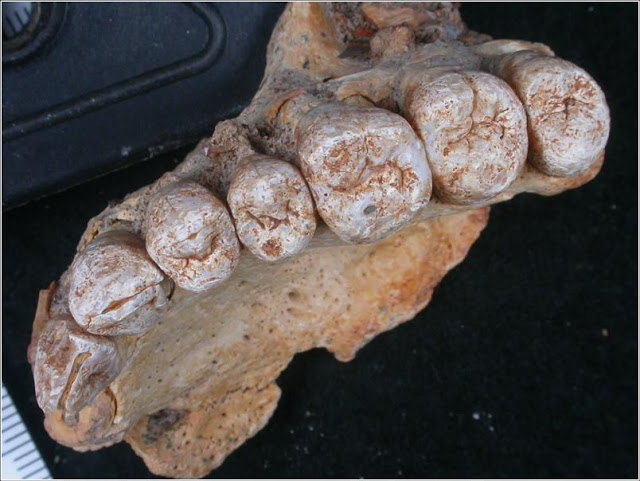12/02/2019
The IPHES earns a place in the TOP 100 scientific articles with the highest social impact from 2018
It takes 63rd place for a study on the oldest remains of the first humans discovered outside of Africa

It takes 63rd place for a study on the oldest remains of the first humans discovered outside of Africa
An article published in Science about the oldest remains of the first humans discovered outside of Africa has been one of the scientific articles with the greatest social impact on the web, ranking 63rd in the TOP 100 articles of 2018. Among the authors of the study is Carlos Lorenzo, researcher at the IPHES (Catalan Institute of Human Paleoecology and Social Evolution) and associate professor at the URV (Universitat Rovira i Virgili). The system used to compile this ranking is called Altmetrics, which counts online conversations, mentions, presence in blogs, social networks and Wikipedia in real time.
The article describes the discovery made by an international team of researchers. The team discovered the oldest Homo sapiens fossil found outside of Africa so far. It is a fragment of the left maxilla, including most of the teeth, of an adult individual identified in the cave of Misliya in Israel. Carlos Lorenzo participated in the paleoanthropological study of this fossil.
The team has applied different dating methods to determine the chronology of the archaeological materials found in Misliya, as well as the fossil itself. The results indicate that it is between 177,000 and 194,000 years old, which would mean that the first migration of modern humans from Africa took place about 60,000 years earlier than previously thought. In addition, the Misliya fossil is about the same age as other remains of the first populations of Homo sapiens identified in two sites in East Africa.
To determine which species the Misliya fossil belonged to, various techniques were used, including the classic anthropological study of the jaw and teeth, computerized tomography to study the internal anatomy and virtual 3D models. Comparing it to fossils of African, European and Asian hominids, and to recent human populations, the Misliya fossil belongs without a doubt to one of the first representatives of Homo sapiens.
